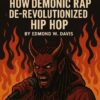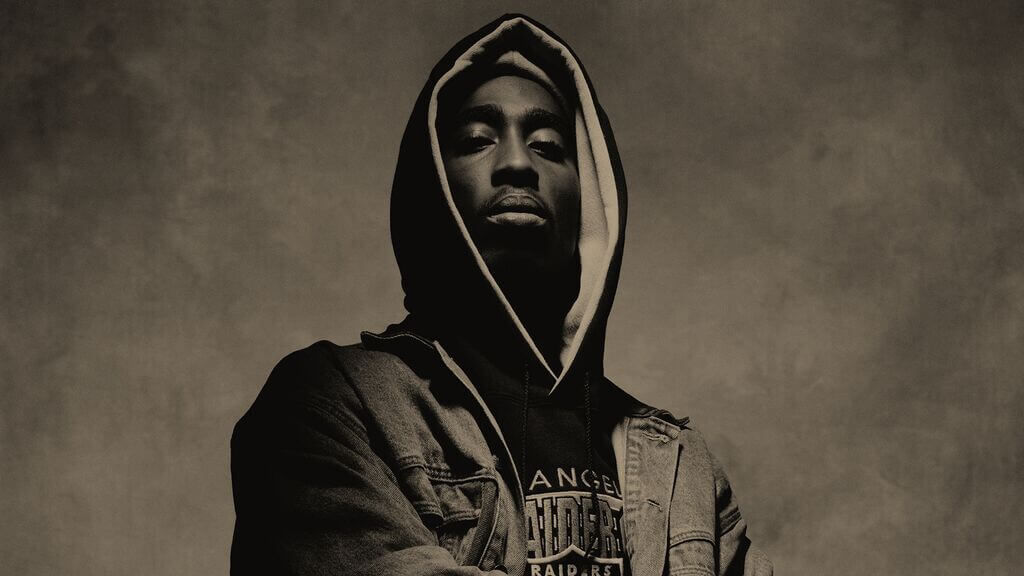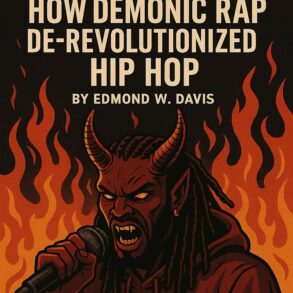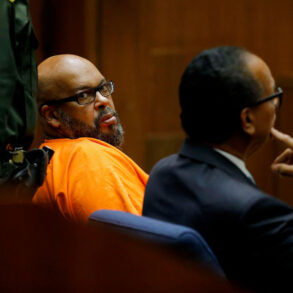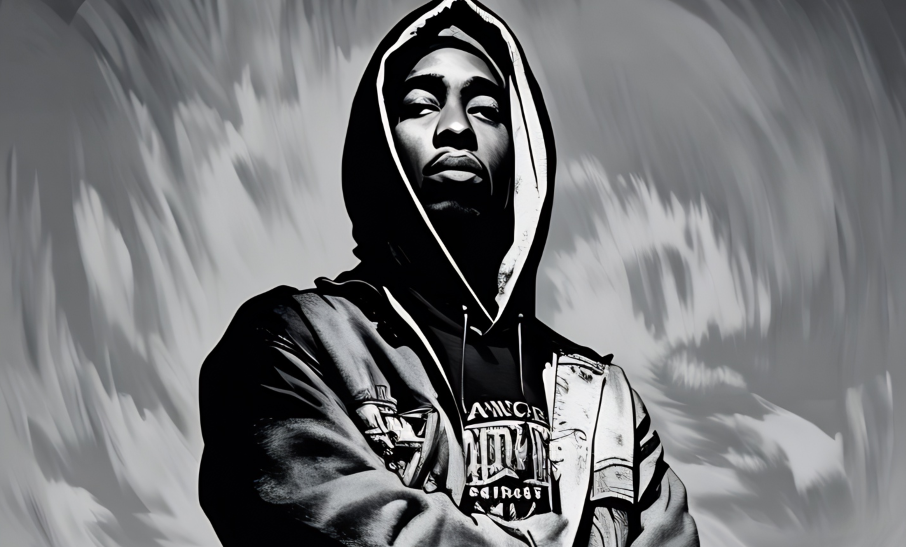
The Golden Age of Hip Hop, spanning roughly from the mid-1980s to the mid-1990s, remains one of the most revered eras in music history. It was a time when raw creativity, groundbreaking production, and lyrical mastery collided to shape a genre that would dominate global culture for decades. From the gritty streets of New York to the sun-soaked boulevards of Los Angeles, this period birthed artists who didn’t just make music—they defined a movement. At Hip Hop Golden Age, we’re dedicated to honoring this transformative era. In this article, we rank the Top 30 Golden Age artists by their influence, celebrating the legends who built the foundation of modern rap.
What makes an artist influential in the Golden Age? It’s more than just chart-topping hits or flashy videos—it’s about innovation, cultural impact, and a legacy that resonates today. Think of the booming beats of Public Enemy calling for revolution, the poetic storytelling of Nas painting vivid pictures of Queensbridge, or the larger-than-life personas of Tupac and Biggie that still echo in every corner of the Hip Hop world. These pioneers didn’t follow trends; they set them, crafting sounds and styles that inspired generations of MCs, producers, and fans alike. Whether it’s the jazzy vibes of A Tribe Called Quest or the hardcore grit of Wu-Tang Clan, the Golden Age was a melting pot of diversity that gave Hip Hop its soul.
You might notice some iconic names missing from this list, and that’s intentional. Pioneers like Grandmaster Flash, Melle Mel, Grandmaster Caz, and Kool Moe Dee aren’t included here because they laid the groundwork for Hip Hop in its earliest days, before the Golden Age truly took shape. These legends were the architects of the genre, forging its identity in the late 1970s and early 1980s with raw energy and innovation. Their contributions were essential, but our focus is on the artists who rose to prominence during the mid-’80s to mid-’90s, building on that foundation to push Hip Hop into its most celebrated era.
Likewise, we’ve left out heavyweights like Jay-Z, DMX, and Eminem, who emerged later and dominated the post-Golden Age landscape, and even acts like The Roots, Common, and Busta Rhymes—who came up in the Golden Age. While their impact on Hip Hop is undeniable, their prime came after the mid-’90s, as the genre evolved into a new phase. This list is about capturing the essence of the Golden Age—those who defined it, not those who preceded or followed it.
So, with that in mind, we’ve sifted through the era’s heavyweights to highlight the 30 artists who left the deepest mark—not necessarily the best rappers or rap groups, but rather the most impactful. From the trailblazing Run-DMC, who brought rap to the mainstream, to the introspective De La Soul, who redefined what Hip Hop could be, each name on this list shaped the game in their own way. Whether you’re a diehard fan revisiting the classics or a newcomer discovering the roots of rap, this guide is your roadmap to the Golden Age’s most influential voices. So, grab your headphones, cue up those dusty vinyls, and join us as we count down the legends who made Hip Hop the cultural juggernaut it is today.
30. Jungle Brothers
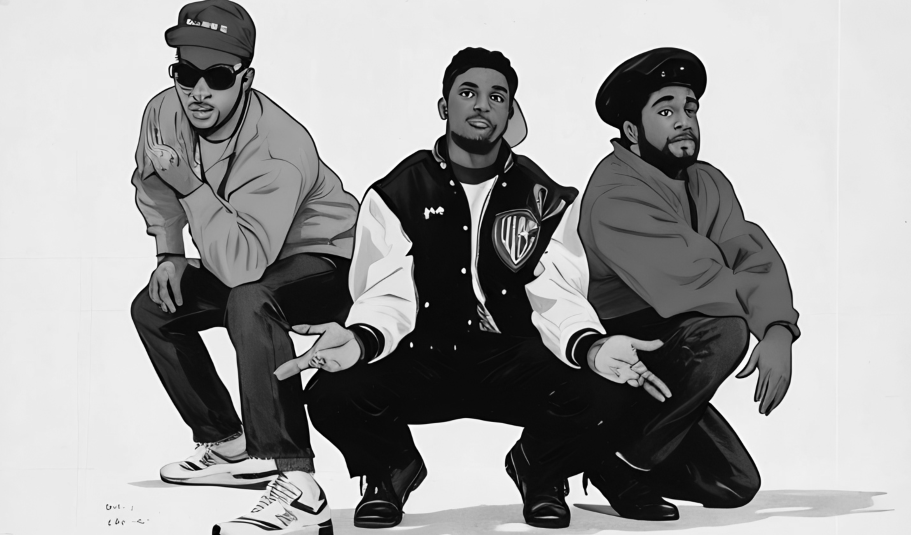


Jungle Brothers swung into the Hip Hop Golden Age with a vibe that fused Afrocentric roots and jazzy flair, adding a playful twist to the era’s soundscape. Formed in 1987 in New York by Mike Gee, Afrika Baby Bam, and DJ Sammy B, they debuted with Straight Out the Jungle in 1988—a record that pulsed with earthy beats and conscious rhymes. “I’ll House You” blended rap with house music, marking them as Golden Age innovators with a foot in the underground.
Their influence took shape through a fresh, eclectic spirit. As core members of the Native Tongues collective alongside De La Soul and A Tribe Called Quest, Jungle Brothers championed positivity and experimentation. “Straight Out the Jungle” leaned on tribal rhythms and clever bars, with “What’s Going On” nodding to social awareness. Their 1989 follow-up, Done by the Forces of Nature, sharpened the vision— “Doin’ Our Own Dang” with Q-Tip and Monie Love grooved with a funky unity that defined their crew’s ethos. Though less commercial than peers, their sound rippled through the Golden Age’s alternative lanes.
The Jungle Brothers’ Golden Age arc peaked early but left a mark. J. Beez Wit the Remedy (1993) ventured into weirder territory with “40 Below Trooper,” keeping their quirky edge alive as the era faded. Their blend of jazz, funk, and house influenced acts like The Pharcyde and Digable Planets, while their Native Tongues ties helped birth a movement that softened Hip Hop’s harder edges. By 1996, their output slowed, but their early work had already planted seeds for rap’s broader palette.
Jungle Brothers flavored the Golden Age with a vibe that danced between streets and soul, thriving where others leaned on grit or gloss. Their Afrocentric beats and free-spirited rhymes carved a niche that still hums in Hip Hop’s smoother, more curious corners. While peers on this list burned bright with intensity or mainstream pull, they grooved through with a laid-back legacy—a Golden Age trio whose earthy roots and house-party bounce remind us rap could stretch, sway, and celebrate its origins all at once.
29. Salt-N-Pepa
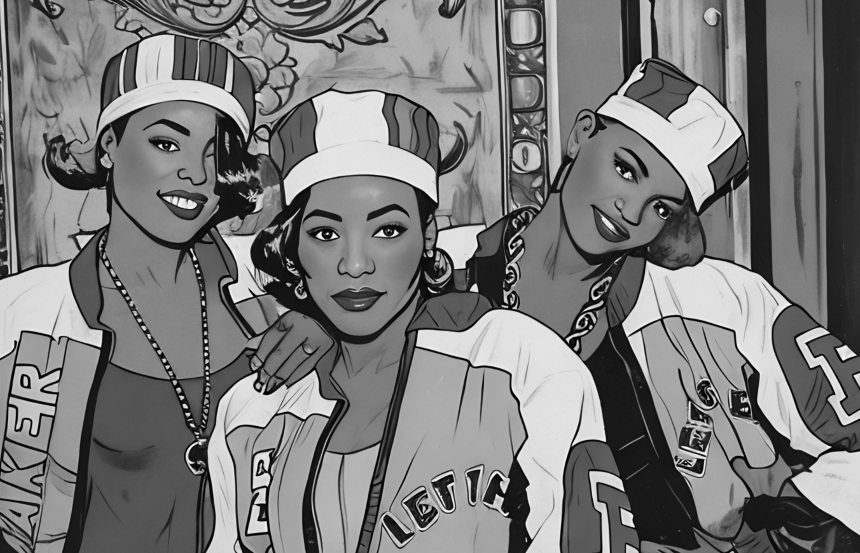


Salt-N-Pepa sashayed onto the scene with a bold, feminine energy that broke molds and turned heads. Formed in Queens, New York, in 1985 by Cheryl “Salt” James, Sandra “Pepa” Denton, and DJ Spinderella (Deidra Roper joined in 1987), they debuted with Hot, Cool & Vicious in 1986. Tracks like “Push It,” a 1987 remix hit, pulsed with sassy rhymes and funky beats, carving a space for women in the Golden Age’s male-heavy landscape.
Their influence blossomed through a mix of swagger and accessibility. Hot, Cool & Vicious leaned on producer Hurby “Luv Bug” Azor’s catchy hooks, with “Tramp” flipping gender dynamics with playful bite. By 1988’s A Salt with a Deadly Pepa, “Shake Your Thang” kept the party rocking, blending rap with R&B flair. Their 1990 album Blacks’ Magic brought “Let’s Talk About Sex,” a bold, chart-topping call for real talk that tackled taboos head-on. Very Necessary (1993) sealed their Golden Age peak with “Shoop” and “Whatta Man,” pairing flirty flows with En Vogue’s vocals, proving they could dominate airwaves and dance floors.
Salt-N-Pepa’s strength lay in their trailblazing vibe. As one of the first all-female rap crews to break big, they smashed ceilings for MCs like MC Lyte and Queen Latifah, bringing a fierce femininity to Hip Hop. Their blend of fun, empowerment, and sex appeal broadened the genre’s reach, influencing pop-rap’s rise and paving the way for acts like TLC. By 1996, their legacy was set, even as Brand New loomed, rooted in their Golden Age run of hits and attitude.
Salt-N-Pepa spiced up the Golden Age with a flavor all their own, thriving where others leaned on grit or lyricism. Their catchy rhymes and confident strut left a mark that echoes in Hip Hop’s sassier, bolder corners. While peers on this list built legacies on rebellion or depth, they danced through with style and substance—a Golden Age trio whose infectious energy still spins on turntables and playlists, reminding us rap could groove, empower, and shine with a woman’s touch.
28. OutKast
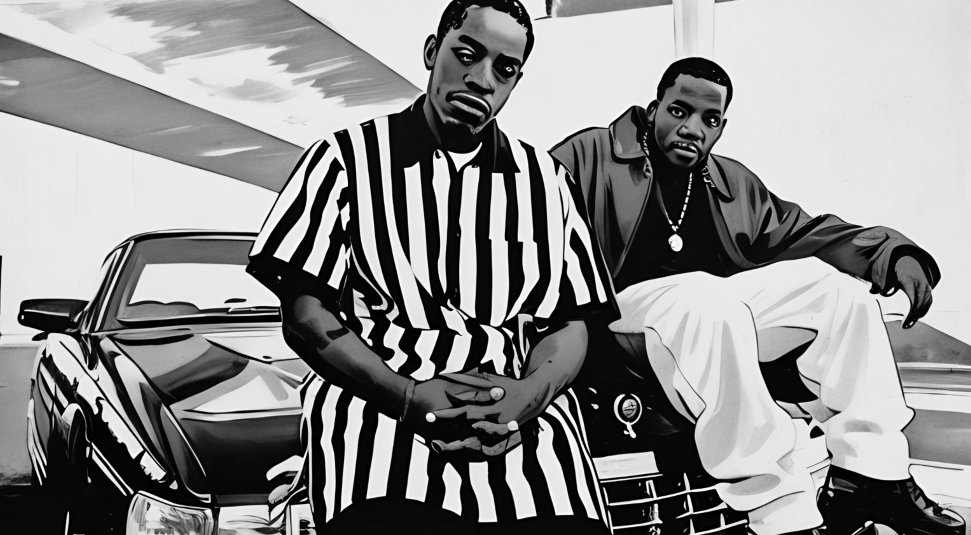


OutKast slipped into the tail end of Hip Hop’s Golden Age with a Southern flair that hinted at the genre’s next chapter. Formed in Atlanta in 1992 by André “André 3000” Benjamin and Antwan “Big Boi” Patton, they debuted with Southernplayalisticadillacmuzi
Their Golden Age influence flickered in their early roots. Produced by Organized Noize, Southernplayalisticadillacmuzi
OutKast’s early work bridged the Golden Age to Hip Hop’s future. Their Atlanta swagger and eclectic style—think André’s poetic flow and Big Boi’s gritty bounce—echoed De La Soul’s quirkiness while paving the way for Southern giants like Lil Wayne and T.I. Their Golden Age output was brief but pivotal, proving the South could hold its own in a New York-L.A.-centric landscape. Their later superstardom overshadows this period, but it’s their ’94-’96 run that earns them a nod here, a spark of what was to come.
OutKast danced into the Golden Age’s sunset with a sound that whispered of bigger things, thriving where others wrapped up legacies. Their Southern roots added a new hue to the era’s palette, leaving a mark that grew beyond its frame. While peers on this list defined the Golden Age’s core, OutKast teased its evolution—a duo whose early steps in ’94 still ripple through Hip Hop’s sprawling history.
27. Kool Keith / Ultramagnetic MCs
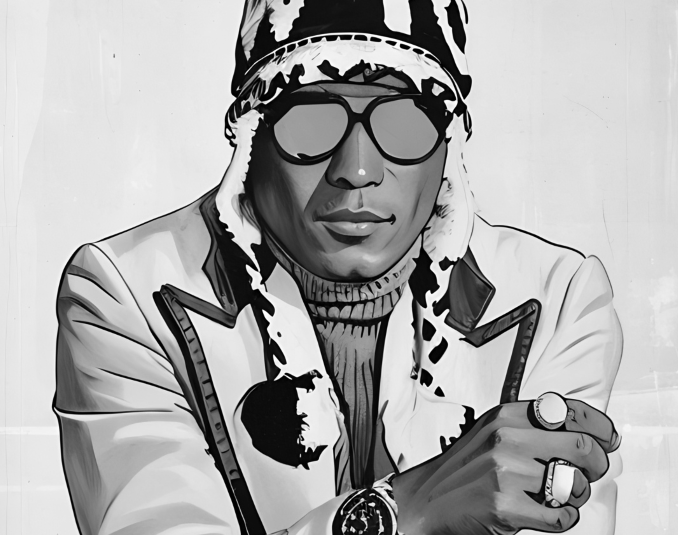


Kool Keith and Ultramagnetic MCs warped the fabric of Hip Hop’s Golden Age with a cosmic flair that turned the Bronx into a sci-fi rap frontier. Formed in 1984 by Keith Thornton (Kool Keith), Ced-Gee, TR Love, and Moe Love, they dropped Critical Beatdown in 1988—a mind-bending blend of funky breaks and futuristic rhymes. Tracks like “Ego Trippin’” pulsed with Keith’s off-kilter flow and Ced-Gee’s innovative sampling, staking their claim as Golden Age oddballs with a vision far ahead of their time.
Their influence brewed from a mix of eccentricity and ingenuity. Kool Keith’s wild, abstract lyrics paired with Ced-Gee’s chopped-up beats on “Give the Drummer Some” bent rap’s rules, introducing a quirky edge to the era’s East Coast sound. Critical Beatdown leaned on James Brown loops and drum machine grit, predating the sample-heavy revolution of Paul’s Boutique. Their 1992 follow-up, Funk Your Head Up, with “Poppa Large,” kept the weirdness alive, while 1993’s The Four Horsemen added “Two Brothers with Checks,” refining their avant-garde style as the Golden Age waned.
Kool Keith’s Golden Age legacy split into dual paths. As Ultramagnetic MCs faded, his solo ventures—like 1996’s Dr. Octagonecologyst under the Dr. Octagon alias—pushed the era’s boundaries further, blending rap with psychedelic funk. His unorthodox rhymes and personas influenced left-field artists like MF DOOM and Del the Funky Homosapien, while Ced-Gee’s production shaped the era’s sonic explorers. Though less mainstream than peers, their cult status grew, cementing their role in Hip Hop’s weirder corners.
Ultramagnetic MCs and Kool Keith lit the Golden Age with a strange, electric glow, thriving where others leaned on street tales or polish. Their fusion of funk, sci-fi, and raw beats carved a niche that still buzzes in rap’s experimental fringes. While others on this list built empires or broke molds, they rewired the genre’s circuits—a Golden Age crew whose cosmic chaos left a legacy as unpredictable as Keith’s next rhyme, proving Hip Hop could dream beyond the block.
Also read: Top 30 Kool Keith Albums
26. Geto Boys
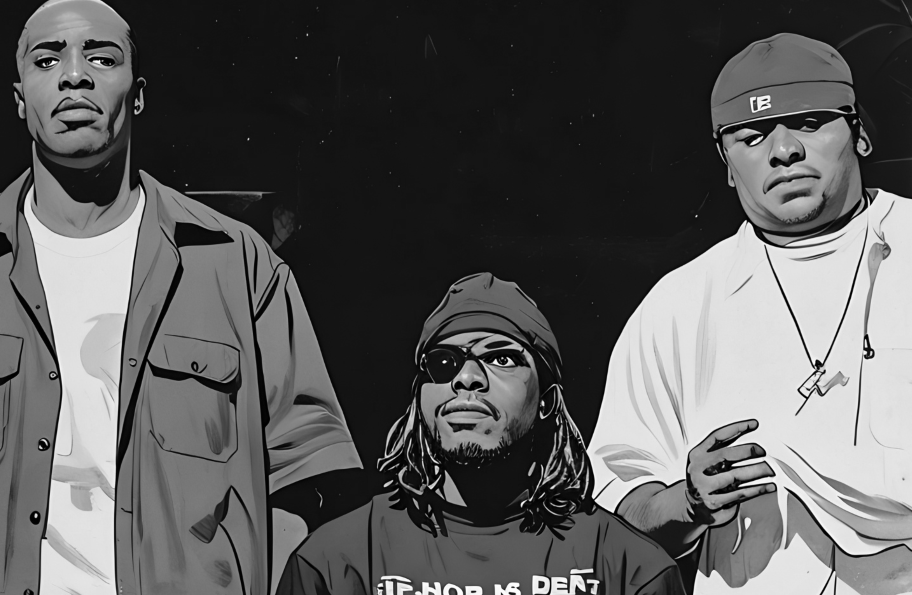


The Geto Boys etched their name into Hip Hop history with a raw, unfiltered sound that put Houston on the rap map. Formed in 1986 by James “J Prince” Smith’s Rap-A-Lot Records in a different line-up, the eventual trio—Scarface, Willie D, and Bushwick Bill—hit their stride with Grip It! On That Other Level in 1989, remixed as The Geto Boys in 1990. Tracks like “Mind Playing Tricks on Me” from We Can’t Be Stopped (1991) delivered a haunting mix of paranoia and street life, making them Southern rap’s Golden Age torchbearers.
Their influence stemmed from a dark, visceral edge. Scarface’s brooding rhymes on “Mind Playing Tricks” peeled back layers of mental struggle, blending gangsta grit with rare vulnerability— a stark contrast to the era’s bravado. Bushwick Bill’s wild energy and Willie D’s sharp delivery fueled cuts like “Damn It Feels Good to Be a Gangsta” (1992), a slow-burner that oozed defiance. DJ Ready Red and later Brad “Scarface” Jordan’s production leaned on eerie loops and heavy bass, crafting a Southern sound that stood apart from West and East Coast styles, paving the way for acts like UGK and Memphis‘ Eightball & MJG.
The Geto Boys’ Golden Age run peaked with We Can’t Be Stopped and 1993’s Till Death Do Us Part, where “Six Feet Deep” kept their grim storytelling alive. Their unapologetic lyrics—violent, introspective, and often controversial—pushed boundaries, earning bans and cult devotion in equal measure. Scarface’s solo ascent by 1994 with The Diary built on their foundation, but it’s the group’s ’89-’93 core that defined their era’s legacy, influencing Southern rap’s rise and Hip Hop’s broader emotional range
Geto Boys brought a shadowy depth to the Golden Age, thriving where others leaned on flash or funk. Their tales of Houston’s underbelly added a Southern chapter to the era’s narrative, leaving a mark that ripples through rap’s grittier, moodier corners. While peers on this list chased mainstream shine or lyrical crowns, they carved their space with raw honesty—a Golden Age crew whose stark vision still haunts Hip Hop’s memory.
25. Too $hort
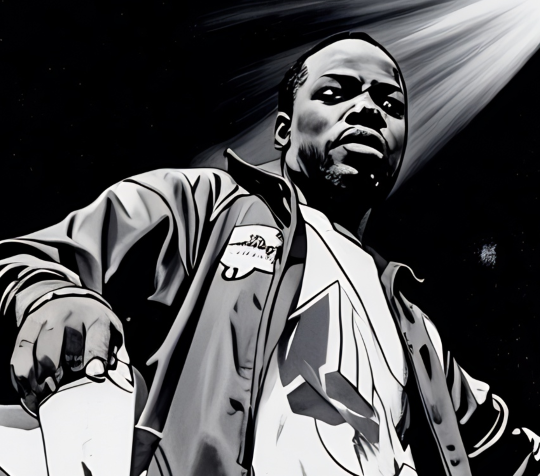


Too $hort carved out a gritty corner of Hip Hop’s Golden Age with a West Coast drawl and tales of pimp life that oozed Oakland swagger. Born Todd Shaw in Los Angeles in 1966, he moved to the Bay Area and started dropping self-made tapes in the mid-’80s. His 1987 album Born to Mack broke through, with tracks like “Freaky Tales” laying down his slow, bass-heavy flow—a Golden Age vibe that turned regional hustle into a national blueprint.
His influence grew from a raw, unpolished edge. Too $hort leaned on homemade beats—think Roland 808 kicks—and a laid-back delivery that spun explicit yarns about women, cash, and street survival. Life Is… Too $hort (1988) took it further, with “Life Is…” blending funky riffs and blunt rhymes that hit the charts, proving the Bay could compete with L.A.’s gangsta wave. 1992’s Shorty the Pimp kept his pimp persona sharp, while 1996’s Gettin’ It (Album Number Ten) capped his Golden Age run, showing he could evolve without straying from his roots.
Too $hort’s staying power set him apart in the era. He built a loyal cult following with relentless output—10 albums by 1996—pioneering indie rap hustle long before it was mainstream. His explicit style and slow-rolling beats influenced West Coast peers like Snoop Dogg and E-40, while his DIY ethos inspired a generation of hustlers-turned-rappers. Though less lyrical than East Coast counterparts, his focus on vibe over virtuosity gave the Golden Age a funky, unapologetic flavor that echoed beyond Oakland.
Too $hort anchored the Golden Age’s West Coast fringe with a sound that thumped as hard as it talked. Where others on this list leaned on complexity or rebellion, he thrived on simplicity and realness, leaving a legacy that rumbles in Hip Hop’s bass-heavy undercurrents. His journey from tape-slinger to rap mainstay mirrors the era’s entrepreneurial spirit—a Golden Age survivor whose tales of the game still resonate, proving you don’t need flash to leave a mark, just a beat and a story.
24. Redman
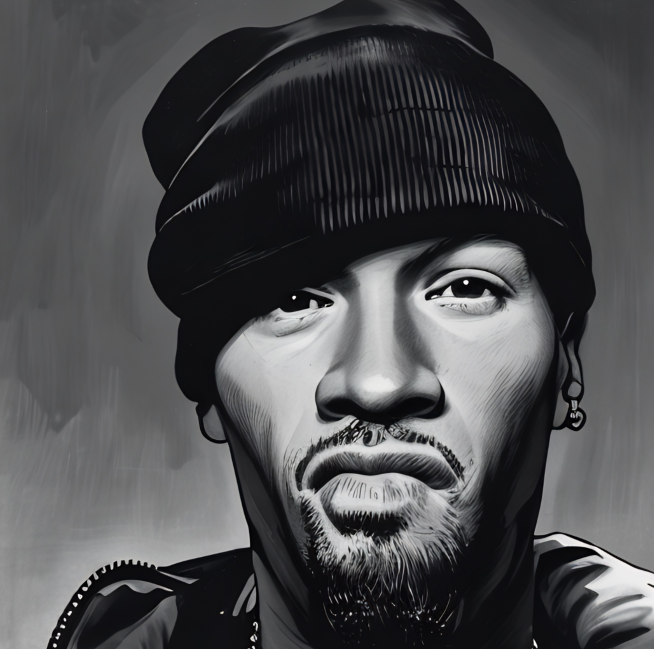


Redman crashed the Hip Hop party with a wild energy and a flow that turned Newark into a rap hotbed. Born Reginald Noble in 1970, he first popped up in 1990 on EPMD’s Business as Usual with “Hardcore,” a gritty teaser of his raw talent. His solo debut, Whut? Thee Album, hit in 1992, unleashing a funky, unhinged MC who brought chaos and charisma to the Golden Age’s East Coast scene—a late-era jolt that kept the fire burning.
His influence sprang from a blend of humor and havoc. Whut? Thee Album roared with “Time 4 Sum Aksion,” a high-octane banger that matched Redman’s rapid, raspy delivery with Erick Sermon’s thumping beats. “Tonight’s da Night” slowed it down, dripping with weed-fueled swagger and clever bars that painted him as the Golden Age’s resident wild card. By 1994’s Dare Iz a Darkside, he’d doubled down— “Rockafella” and “Can’t Wait” leaned into dark, psychedelic vibes, proving he could twist the era’s sound without losing his edge.
Redman’s Golden Age run thrived on his unpredictable flair. Tied to EPMD’s Hit Squad, he brought a loose-cannon energy that contrasted the era’s polished players, influencing peers like Method Man—his future rhyme partner—and Busta Rhymes. His 1996 album Muddy Waters, with “Whateva Man,” capped his Golden Age arc, blending funk and fury into a gritty farewell to the period. Off the mic, his wild persona—think blunt in hand, rhymes off the dome—shaped Hip Hop’s rugged, real vibe, leaving a mark on the genre’s freer spirits.
Redman lit up the Golden Age’s tail end with a spark that refused to fade, thriving where others leaned on structure or street cred. His funky chaos and relentless flow added a jolt to the era’s East Coast tapestry, crafting a legacy that pulses in Hip Hop’s rowdier corners. While others on this list built empires or broke molds, Redman rolled through with a grin and a growl—a Golden Age renegade whose rawness still echoes in the beats and bars of those who dare to keep it real.
Also read: Ranking Redman’s Albums
23. Snoop Dogg
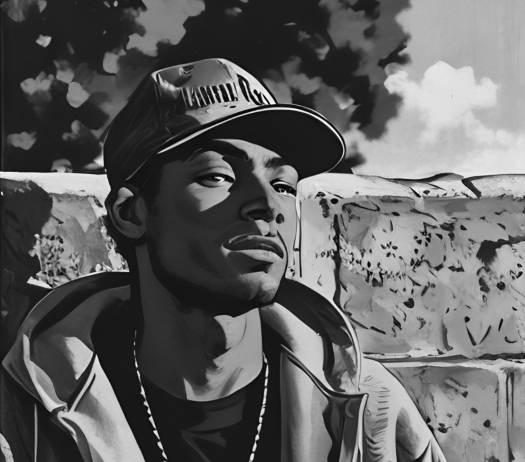


Snoop Dogg loped onto the scene with a laid-back drawl and a West Coast cool that turned him into an instant icon. Born Calvin Broadus in Long Beach, California, in 1971, he emerged in 1992 as Dr. Dre’s protégé on The Chronic, stealing the show with verses on “Nuthin’ but a ‘G’ Thang.” His solo debut, Doggystyle, dropped in 1993, cementing his place in the era’s final act with a G-funk sound that oozed smooth menace—a Golden Age classic born from the streets of L.A.
His influence took root in a blend of charisma and flow. On The Chronic, Snoop’s silky delivery over Dre’s funk-soaked beats brought a new flavor to the West, contrasting the Golden Age’s harder edges. Doggystyle doubled down— “Gin and Juice” rolled with a party vibe that hit the charts, while “Who Am I (What’s My Name)?” flexed his persona: lanky, sly, and effortlessly fly. Tracks like “Murder Was the Case” added a darker twist, proving he could shift from chill to chilling without breaking stride. His style defined G-funk’s peak, bridging the Golden Age to the ’90s mainstream.
Snoop’s rise came late in the era, but his impact was immediate. His Long Beach roots and Crip affiliation lent authenticity, while his playful slang and pimpish charm shaped Hip Hop’s cultural swagger, influencing acts like Warren G and Nate Dogg. By 1996’s Tha Doggfather, he’d weathered label drama and legal woes, keeping his Golden Age spark alive with “Snoop’s Upside Ya Head,” even as the sound evolved. His voice became a West Coast staple, carrying Dre’s legacy forward.
Snoop Dogg slid into the Golden Age with a vibe all his own, thriving where others leaned on grit or lyricism. His smooth rhymes and G-funk grooves painted the era’s sunset in neon hues, leaving a legacy that stretches from L.A. corners to global stages. While peers on this list burned with intensity or innovation, Snoop cruised through with a grin and a blunt—a Golden Age star whose cool still lights up Hip Hop’s memory.
22. Slick Rick
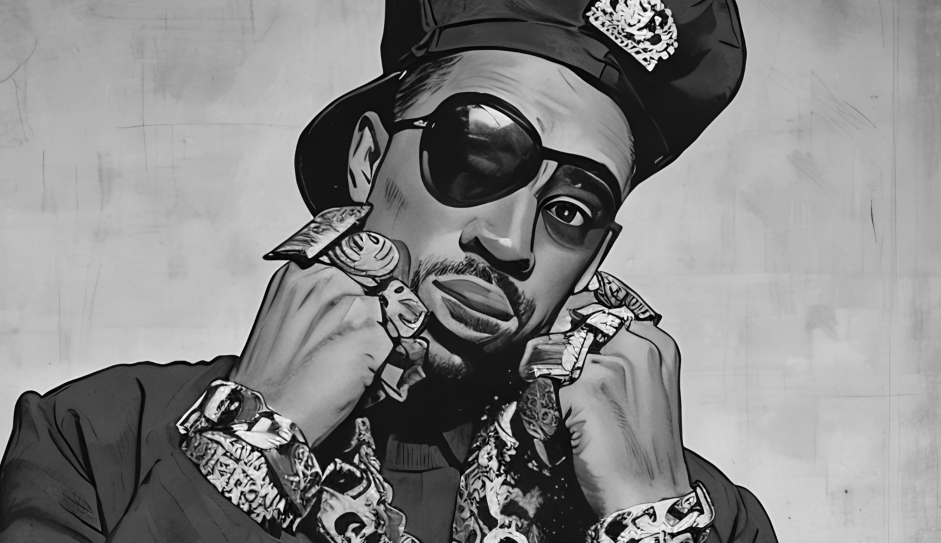


With a patch over one eye and a British lilt in his voice, Slick Rick carved a singular path through Hip Hop’s Golden Age, blending storytelling with a flair that felt like pure theater. Born Richard Walters in London in 1965 and raised in the Bronx, he debuted in 1988 with The Great Adventures of Slick Rick, a Def Jam classic that dropped him into the era’s spotlight. Tracks like “Children’s Story” spun vivid yarns with a mischievous grin, marking him as the Golden Age’s master narrator.
His influence flowed from a gift for crafting tales that stuck. “La Di Da Di,” a 1985 Doug E. Fresh collab, laid the groundwork with its playful, off-the-cuff rhymes, but Great Adventures turned it up. “Mona Lisa” painted a quirky romance over funky beats, while “Teenage Love” added a tender twist—proof Rick could pivot from mischief to melody. His silky flow, accented by that transatlantic drawl, and his eye-patch swagger gave him a persona as memorable as his bars, influencing rappers from Snoop Dogg to Ghostface Killah who’d later lean on narrative flair.
Slick Rick’s Golden Age journey hit turbulence—prison stints after a 1990 shooting delayed his output—but he bounced back with The Ruler’s Back (1991) and Behind Bars (1994). Cuts like “I Shouldn’t Have Done It” and the title track kept his wit sharp, even behind bars, reflecting the era’s grit and resilience. His style—part bard, part bandit—brought a theatrical edge to Hip Hop, setting him apart in a field of braggarts and rebels.
Slick Rick wove a thread of whimsy and wisdom into the Golden Age, thriving where others chased hardness or hype. His stories turned rap into a canvas of characters and capers, leaving a mark that echoes in Hip Hop’s more playful, lyrical corners. While peers on this list built legacies on intensity or innovation, Rick crafted his with a sly wink and a tale well-told—a Golden Age jester whose rhymes still dance through the genre’s memory.
21. Queen Latifah
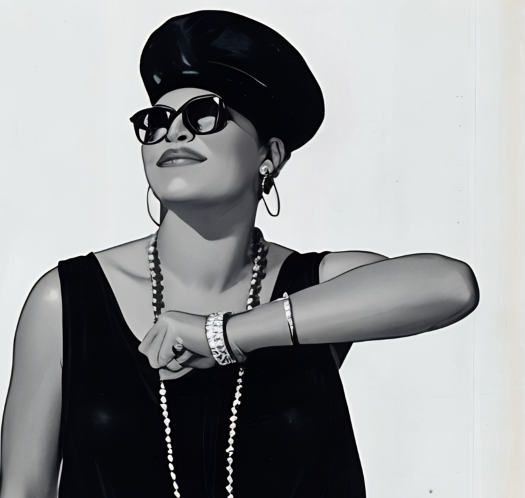


Queen Latifah arrived with a regal presence and a voice that carried strength and grace. Born Dana Owens in Newark, New Jersey, in 1970, she debuted with All Hail the Queen in 1989, blending Afrocentric pride with a fierce flow that broke through the era’s male-heavy ranks. Tracks like “Ladies First” with Monie Love turned the mic into a platform for empowerment, marking her as a Golden Age pioneer who redefined rap’s gender dynamics.
Her influence blossomed through a mix of authority and versatility. All Hail the Queen pulsed with “Wrath of My Madness,” where her confident rhymes rode funky beats, signaling a new kind of MC—one who could command respect without aggression. By 1991’s Nature of a Sista’, she’d honed her style, with “Latifah’s Had It Up 2 Here” flexing her lyrical muscle against doubters. Black Reign (1993) brought her biggest hit, “U.N.I.T.Y.,” a Grammy-winning anthem that tackled misogyny head-on, cementing her role as a voice for women in Hip Hop and beyond.
Queen Latifah’s impact stretched past rhymes into cultural resonance. As part of the Native Tongues collective with De La Soul and A Tribe Called Quest, she helped cultivate a positive, eclectic vibe in the Golden Age, inspiring MCs like MC Lyte and Lauryn Hill. Her shift to jazz-infused tracks on Black Reign hinted at her broader talents, a versatility that fueled her later acting career—think Living Single—while keeping her rap roots alive. By 1996’s The Dana Owens Album precursor vibes, she’d bridged Hip Hop with mainstream appeal, a rare feat in the era.
Queen Latifah ruled the Golden Age with a crown of purpose and poise, thriving where others leaned on bravado or grit. Her blend of empowerment, rhythm, and realness left a legacy that ripples through Hip Hop’s more inclusive corners. While peers on this list burned bright with fury or funk, she built a throne of dignity and defiance—a Golden Age queen whose reign reshaped the genre’s narrative, proving rap could uplift as powerfully as it could provoke.
20. Kool G Rap
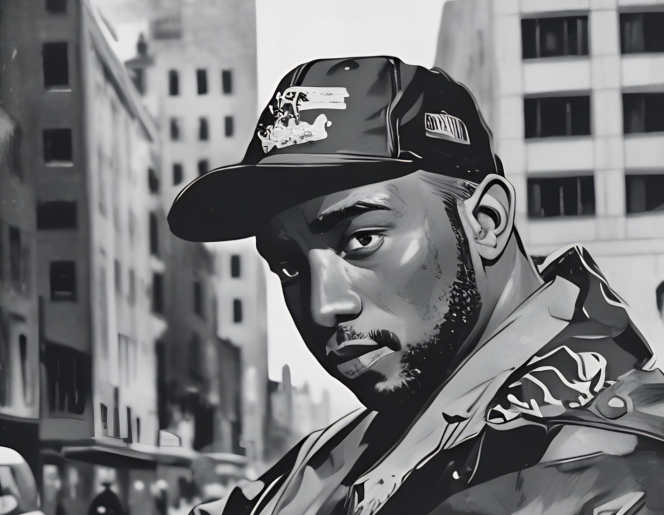


Kool G Rap hit with a lyrical ferocity that turned Queens into a breeding ground for rap’s sharpest minds. Born Nathaniel Wilson in 1968, he emerged in 1986 with the Juice Crew, dropping his debut Road to the Riches alongside DJ Polo in 1989. Tracks like the title cut unleashed his machine-gun flow and vivid street tales, painting gritty pictures with a precision that marked him as a Golden Age heavyweight in the making.
His influence rested on a mastery of language and narrative. Kool G Rap’s rhymes—dense with multisyllables and cinematic detail—elevated rap’s storytelling game. “Streets of New York” (1990) from Wanted: Dead or Alive spun tales of urban decay with a poet’s eye, while “Ill Street Blues” (1992) from Live and Let Die layered mafioso themes over sinister beats, predating the subgenre Biggie and Raekwon would later perfect. His rapid delivery and complex wordplay pushed the boundaries of what an MC could do, leaving peers scrambling to keep up.
Kool G Rap’s Golden Age run peaked with those early ’90s gems. Though less commercially flashy than some contemporaries, his technical skill and dark flair earned him a cult following. 4,5,6 (1995) brought “Fast Life” with Nas, a late Golden Age nod that tied his influence to the era’s next wave. As a Juice Crew linchpin alongside Big Daddy Kane, he helped shape East Coast Hip Hop’s lyrical edge, inspiring a lineage of MCs—think Jay-Z, Eminem, and even modern spitters—who trace their pen game back to his blueprints.
Kool G Rap brought a razor’s edge to the Golden Age, thriving where others leaned on hooks or hype. His tales of hustlers and hitmen added a noir tint to the era’s palette, leaving a mark that lingers in Hip Hop’s grittier corners. While peers on this list dazzled with charisma or rebellion, he carved his legacy through sheer lyrical might—a Queens poet whose rhymes still cut deep, echoing the Golden Age’s hunger for craft over compromise.
19. Cypress Hill
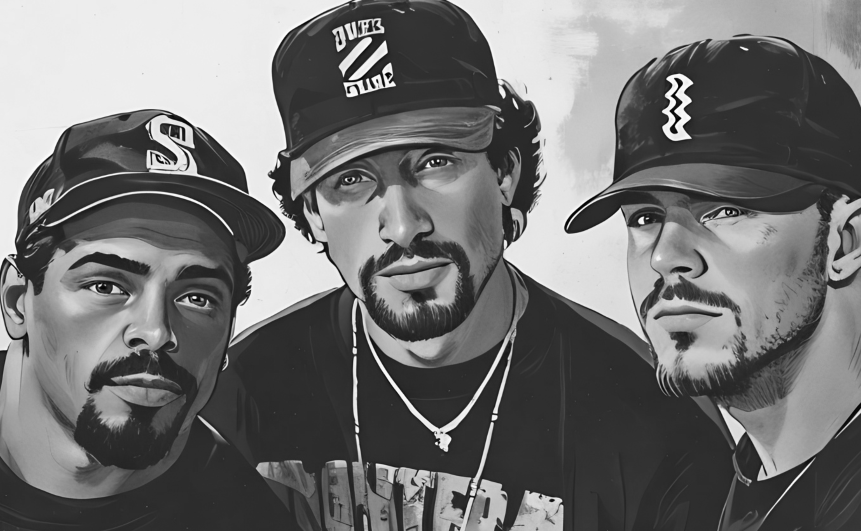


Cypress Hill blazed through Hip Hop’s Golden Age with a dark, smoky vibe that set them apart on the West Coast scene. Formed in South Gate, California, in 1988 by B-Real, Sen Dog, and DJ Muggs, this trio debuted with their self-titled Cypress Hill in 1991, a record that fused eerie beats with tales of weed and mayhem. Tracks like “How I Could Just Kill a Man” introduced B-Real’s nasal, menacing flow, paired with Muggs’ haunting production, carving a niche in the Golden Age’s diverse soundscape.
Their influence took hold with a bold, unorthodox approach. Cypress Hill leaned on Latin influences and stoner culture, with “Hand on the Pump” blending gangsta grit with a twisted glee that hooked listeners. By 1993’s Black Sunday, they’d sharpened their edge— “Insane in the Brain” became a crossover smash, its warped funk and rebellious hook pushing Hip Hop into rock and pop territory. “I Ain’t Goin’ Out Like That” doubled down, cementing their knack for blending menace with melody. Their 1995 effort, III: Temples of Boom, kept the Golden Age spirit alive with “Throw Your Set in the Air,” a slow-burner that oozed atmosphere.
Cypress Hill’s strength lay in their genre-bending vision. They brought a Latino perspective to a Black-led art form, broadening Hip Hop’s cultural reach, while their pro-weed stance—years before legalization—pioneered stoner rap, influencing acts like Snoop Dogg and Wiz Khalifa. Muggs’ production, with its eerie whistles and heavy bass, left a sonic imprint that echoed beyond the Golden Age, touching alternative and metal scenes. Their live energy, fueled by Sen Dog’s wild hype, turned concerts into chaotic celebrations.
Cypress Hill painted the Golden Age with a haze of rebellion and innovation, thriving where others leaned on traditional rap tropes. Their blend of dark humor, street tales, and psychedelic beats carved a path through the era’s West Coast dominance, leaving a legacy that burns bright in Hip Hop’s wilder corners. While peers on this list focused on lyricism or swagger, Cypress Hill brought a twisted flair, proving the Golden Age could handle a little insanity alongside its soul.
18. MC Lyte
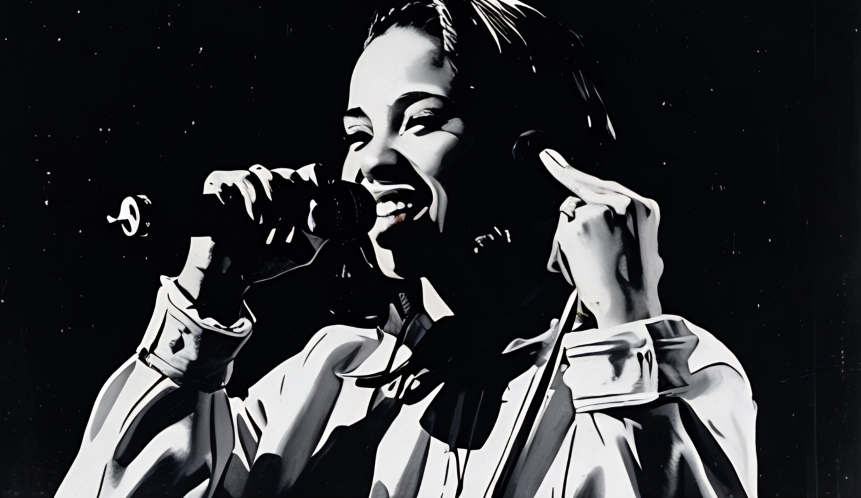


MC Lyte stepped onto the scene with a voice that demanded attention, breaking barriers as one of the era’s fiercest female MCs. Born Lana Moorer in Brooklyn, New York, in 1970, she debuted with Lyte as a Rock in 1988 at just 17, delivering rhymes with a confidence that rivaled her male peers. Tracks like “Paper Thin” pulsed with sharp wit and a steady flow, marking her arrival as a Golden Age force who refused to be sidelined in a male-dominated game.
Her influence grew from her lyrical grit and trailblazing presence. Lyte as a Rock brought “I Cram to Understand U,” a raw take on love and betrayal that flexed her storytelling chops over sparse, funky beats. By 1989’s Eyes on This, she’d honed her edge with “Cha Cha Cha,” a brassy hit that climbed charts and proved women could hold their own in Hip Hop’s competitive landscape. Act Like You Know (1991) added “Poor Georgie,” a narrative gem that balanced toughness with vulnerability, while 1993’s Ain’t No Other delivered “Ruffneck,” earning her a Grammy nod and cementing her Golden Age peak.
MC Lyte’s power lay in her authenticity and pioneering spirit. She navigated the era’s macho culture with skill and swagger, carving a path for female rappers like Queen Latifah and Lauryn Hill. Her rhymes—direct, clever, and unflinching—tackled street life and personal struggles, resonating with fans and peers alike. Beyond music, her voiceover work and mentorship in the ’90s extended her reach, amplifying her role as a Hip Hop role model. By 1996’s Bad as I Wanna B, she adapted to new sounds while staying rooted in her Golden Age essence.
MC Lyte lit a torch in the Golden Age, proving Hip Hop’s mic wasn’t just for men. Where others on this list leaned on flash or fury, she thrived on precision and resilience, leaving a mark that echoes in the genre’s diverse voices. Her journey from Brooklyn teen to rap royalty mirrors the era’s growth—a legacy of strength and skill that still inspires Hip Hop’s next wave.
17. Big Daddy Kane
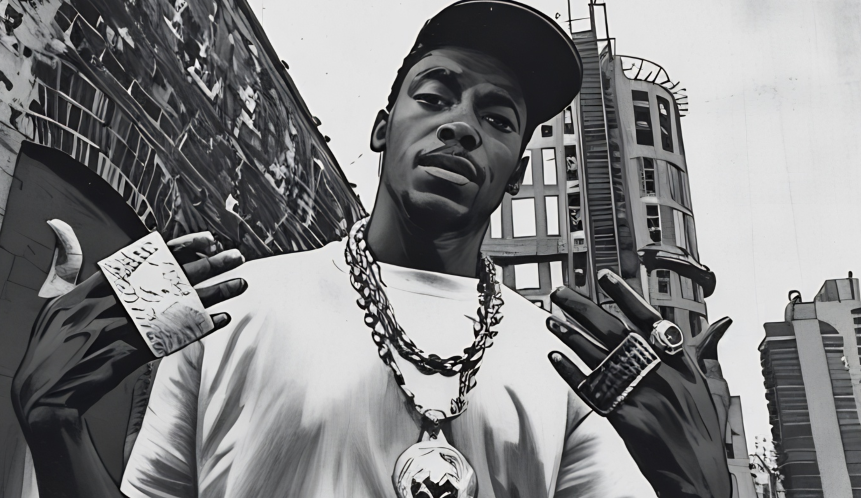


Big Daddy Kane glided into Hip Hop with a charisma and lyrical finesse that made him a standout in the era’s crowded field. Born Antonio Hardy in Brooklyn, New York, in 1968, he emerged in 1988 with Long Live the Kane, a debut that unleashed his rapid-fire rhymes and smooth swagger. Tracks like “Ain’t No Half-Steppin’” paired his dexterous flow with Marley Marl’s crisp beats, cementing Kane as a Golden Age MC who could outrap and outshine his peers with ease.
His influence flowed from a rare mix of speed, style, and substance. Kane’s verses on “Raw” (1988) moved at breakneck pace, weaving intricate patterns that dazzled listeners and set a new bar for technical skill. Yet, he balanced that prowess with charm—cuts like “Smooth Operator” from It’s a Big Daddy Thing (1989) oozed romance, earning him a ladies’ man rep that broadened his appeal. His Juice Crew affiliation, alongside Rakim and Kool G Rap, amplified his clout.
Kane’s impact reached beyond the mic. His sharp suits, high-top fade, and dance moves shaped Hip Hop’s visual flair, influencing the genre’s image as it hit mainstream strides. Lyrically, he inspired a wave of MCs—Jay-Z, who got an early boost from Kane, credits him as a mentor—bridging old-school bravado with the Golden Age’s lyrical leap. Though his commercial peak waned by the mid-’90s, his early run left a deep imprint, blending battle-rap grit with a polished edge.
Big Daddy Kane lit up the Golden Age with a flair that few could match, thriving where others leaned on grit or rebellion. His blend of rapid rhymes and suave persona carved a path through the era’s East Coast scene, leaving a legacy that ripples through Hip Hop’s smoother, sharper corners. While peers on this list pushed boundaries with fury or funk, Kane danced through them, a king whose crown still gleams in the genre’s memory.
16. EPMD
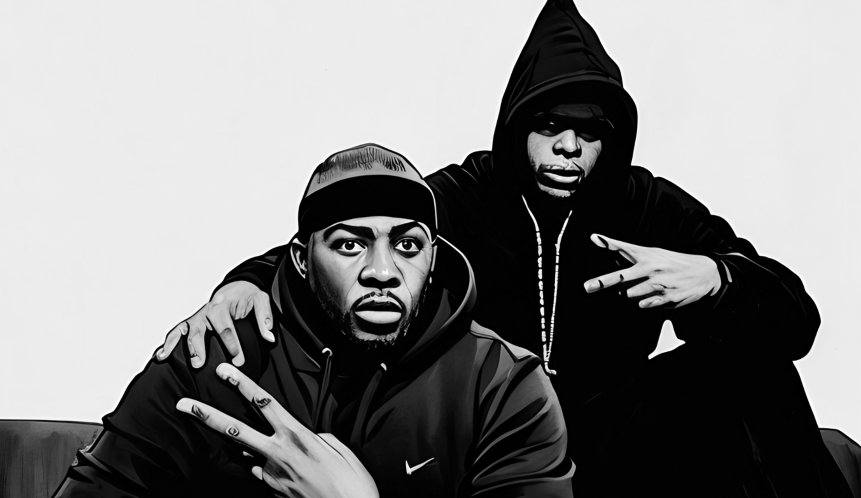


EPMD slipped into Hip Hop’s Golden Age with a smooth, funk-driven sound that turned Long Island into a rap powerhouse. Formed in 1987 by Erick Sermon (E Double) and Parrish Smith (PMD), this duo debuted with Strictly Business in 1988, a record that fused laid-back flows with heavy basslines. Tracks like “You Gots to Chill” and “Strictly Business” leaned on Zapp and Parliament samples, delivering a groove-heavy vibe that carved a distinct lane in the Golden Age’s East Coast scene.
Their influence stemmed from a seamless blend of style and substance. Erick Sermon’s production—think slow-rolling funk loops paired with crisp drums—created a backdrop that felt both gritty and polished, while PMD’s steady rhymes added a streetwise cool. Unfinished Business (1989) kept the momentum with “So Wat Cha Sayin’,” a braggadocious cut that flexed their lyrical chemistry. By 1990’s Business as Usual, they’d roped in a young Redman for “Hardcore,” hinting at their knack for spotting talent—a trait that bloomed with their Hit Squad collective, including Das EFX. Business Never Personal (1992) capped their Golden Age run with “Crossover,” a sly jab at rap’s commercialization that still banged.
EPMD’s strength lay in their consistency and entrepreneurial spirit. They churned out four albums in five years, each a masterclass in funky minimalism that influenced producers like Pete Rock and DJ Premier. Their business-minded approach—naming albums with a corporate twist—mirrored the Golden Age’s growing hustle, inspiring acts to treat rap as both art and enterprise. Though they split in 1993, their reunion later underscored their lasting pull, but it’s their ’88-’92 peak that defines their era’s legacy.
EPMD brought a slick, understated flavor to the Golden Age, thriving where others chased intensity or flash. Their funk-soaked beats and effortless rhymes built a bridge between Hip Hop’s party roots and its lyrical future, leaving a mark that echoes in the genre’s smoother corners. While peers on this list wielded rebellion or poetry, EPMD mastered the art of keeping it cool and collected—a Golden Age duo whose business-like precision still resonates in Hip Hop’s DNA.
15. Beastie Boys
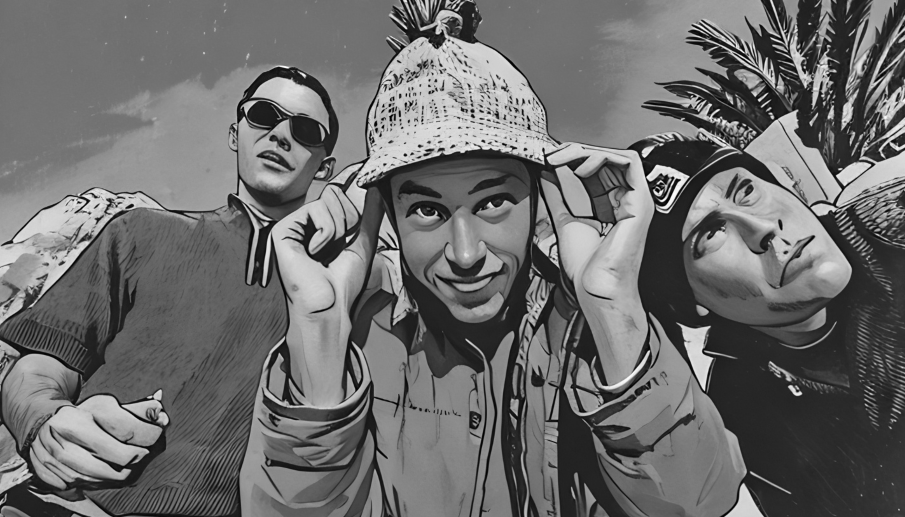


From the concrete jungle of New York City emerged the Beastie Boys, a trio that injected Hip Hop’s Golden Age with a wild, irreverent energy. Formed in 1981 as a punk outfit by Adam “Ad-Rock” Horovitz, Michael “Mike D” Diamond, and Adam “MCA” Yauch, they pivoted to rap with Licensed to Ill in 1986, a Def Jam debut that turned them into Golden Age mavericks. With Rick Rubin’s bombastic production, tracks like “Fight for Your Right” and “No Sleep Till Brooklyn” fused rap with rock riffs, catapulting Hip Hop into frat houses and arenas alike.
The Beastie Boys’ influence bloomed through their fearless fusion and evolution. Licensed to Ill made them the first rap album to top the Billboard 200, blending bratty rhymes with party anthems that broadened Hip Hop’s audience. Yet, they didn’t rest there. Paul’s Boutique (1989), crafted with the Dust Brothers, flipped the script—its dense, sample-heavy tapestry on “Shake Your Rump” and “Hey Ladies” revealed a creative depth that stunned critics and fans. By 1992’s Check Your Head, they’d picked up instruments, merging funk and punk on “So What’cha Want,” a gritty anthem that kept them vital as the Golden Age matured.
Their impact lies in their boundary-breaking spirit. As white rappers in a Black-led genre, they navigated skepticism with humor and skill, earning respect without mimicking. Their DIY ethos and eclectic tastes—spanning “Sabotage” (1994) to Buddhist advocacy via MCA—pushed Hip Hop’s cultural reach, influencing alt-rap acts like Cypress Hill and Rage Against the Machine. Ill Communication (1994) capped their Golden Age run, blending raw energy with introspection, proving they could evolve while staying true to their roots.
The Beastie Boys colored the Golden Age with a rebellious streak all their own. Where others leaned on street cred or lyricism, they thrived on chaos and reinvention, expanding Hip Hop’s sonic and social borders. Their journey from punk kids to rap pioneers mirrors the era’s restless creativity—a legacy of beats, rhymes, and attitude that still pulses through the genre, reminding us Hip Hop can defy norms and unite unlikely crowds.
14. Ice T
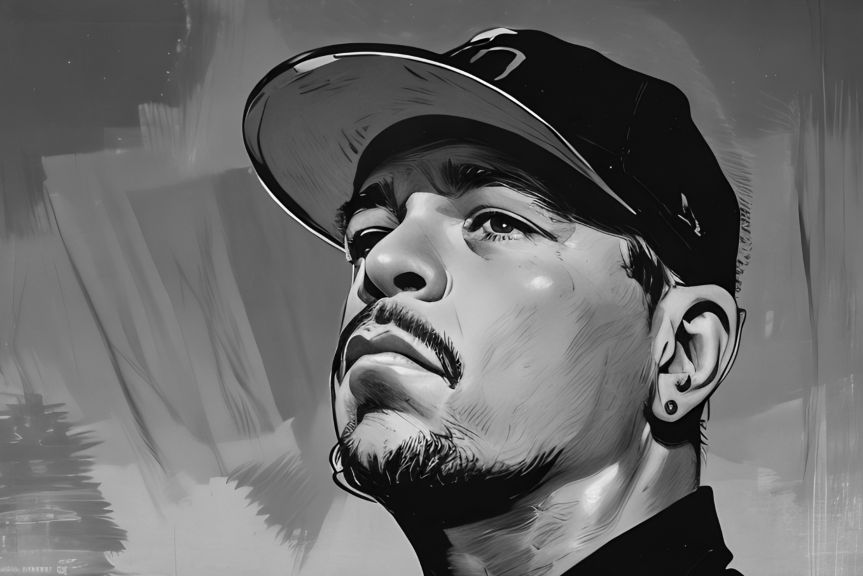


Ice-T rolled into Hip Hop with a West Coast edge that fused street grit with sharp commentary, leaving an indelible mark on the era’s soundscape. Born Tracy Marrow in Newark, New Jersey, in 1958, he landed in Los Angeles and debuted with Rhyme Pays in 1987, one of the first West Coast rap albums to gain traction. With his raspy voice and unflinching tales, Ice-T helped pioneer gangsta rap, setting the stage for the Golden Age’s raw, unfiltered narratives.
His influence took root with a blend of menace and intellect. Rhyme Pays introduced “6 in the Mornin’,” a slow-rolling track that painted vivid pictures of L.A.’s underbelly, predating N.W.A’s Compton chronicles. By 1988’s Power, Ice-T refined his craft, with “Colors”—from the film soundtrack—delivering a stark look at gang life that hit both airwaves and streets. His 1991 album O.G. Original Gangster marked a peak, blending hardcore rhymes on “New Jack Hustler” with the genre-defining title track. That same year, his metal band Body Count dropped “Cop Killer,” sparking controversy that underscored his fearless boundary-pushing.
Ice-T’s role in the Golden Age went beyond music. He brought a hustler’s perspective—honed by his past as a pimp and thief—into rap, adding authenticity that resonated with fans and inspired peers. His storytelling, laced with dark humor and social critique, bridged East Coast lyricism with West Coast swagger, influencing artists like Ice Cube and Snoop Dogg. Albums like The Iceberg/Freedom of Speech… Just Watch What You Say (1989) tackled censorship and power, proving rap could provoke thought as well as pulse. By 1993’s Home Invasion, he kept evolving, staying relevant as the era waned.
Ice-T etched his name in the Golden Age with a voice that growled truth over beats. Where others leaned on flash or rebellion, he mixed menace with meaning, shaping Hip Hop’s West Coast identity. His legacy stretches from L.A.’s streets to its screens, a Golden Age original whose rhymes still ripple through the genre’s tougher corners, reminding us rap can confront as fiercely as it entertains.
13. KRS One / Boogie Down Productions
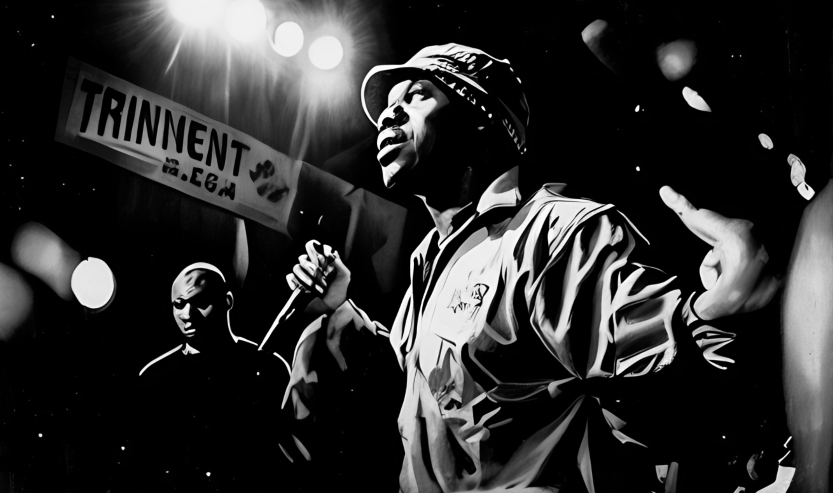


KRS-One and Boogie Down Productions stormed the early Hip Hop game with a blend of street savvy and intellectual fire, carving a unique niche in the era’s East Coast scene. Formed in the South Bronx in 1986 by Lawrence “KRS-One” Parker, DJ Scott La Rock, and D-Nice, BDP debuted with Criminal Minded in 1987. Tracks like “South Bronx” and “The Bridge Is Over” ignited the infamous Bridge Wars, asserting the Bronx’s dominance with raw beats and KRS-One’s commanding rhymes—a Golden Age salvo that echoed Hip Hop’s competitive roots.
The group’s influence deepened through tragedy and evolution. After Scott La Rock’s murder in 1987, KRS-One steered BDP into conscious territory with By All Means Necessary (1988). “My Philosophy” paired booming production with sharp-witted bars, establishing him as “The Teacha,” a voice for education and empowerment. Albums like Ghetto Music: The Blueprint of Hip Hop (1989) and Edutainment (1990) solidified this shift, with “Love’s Gonna Get’cha” blending social critique with storytelling. KRS-One’s gravelly delivery and philosophical bent turned rap into a classroom, inspiring a generation to think as well as nod.
As BDP faded, KRS-One’s solo run kept his Golden Age flame alive. His 1993 debut, Return of the Boom Bap, produced by DJ Premier and others, delivered “Sound of da Police,” a scathing take on law enforcement that rivaled N.W.A’s fury. KRS-One (1995) followed, with “MC’s Act Like They Don’t Know” proving his lyrical edge endured. His dual role as a battle MC and educator bridged Hip Hop’s raw origins with its growing complexity, influencing artists like Common and Talib Kweli.
KRS-One and BDP brought a cerebral grit to the Golden Age, balancing brawls with books. While others on this list leaned on swagger or rebellion, he infused rap with purpose, turning the mic into a tool for both war and wisdom. From the Bronx streets to global stages, his journey reflects the era’s diversity—a legacy of beats and bars that still stirs Hip Hop’s conscience, urging it to question, learn, and fight.
Also read: Ranking KRS One’s Albums
12. Gang Starr
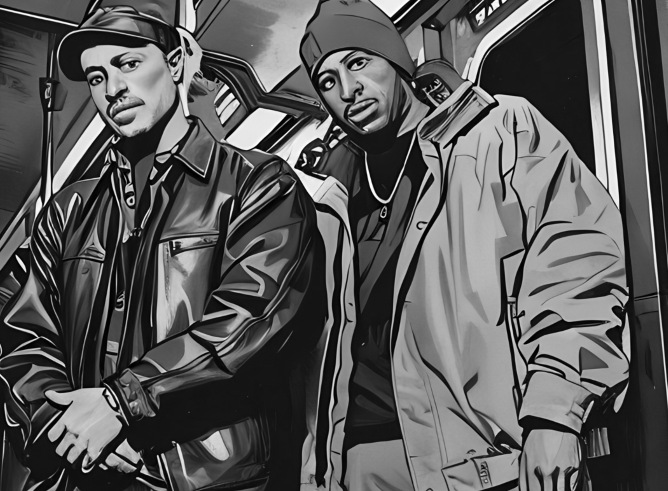


Gang Starr carved a distinct groove in Hip Hop, blending jazz-infused beats with street-smart lyricism that defined the era’s underground pulse. Formed in 1986 by Guru (Keith Elam) and DJ Premier (Christopher Martin), this Boston-to-Brooklyn duo hit their stride with their second album Step in the Arena in 1991. Tracks like “Just to Get a Rep” paired Guru’s cool, deliberate flow with Premier’s crisp, sample-heavy production, creating a sound that felt both timeless and ahead of its time—a Golden Age gem born from raw talent and chemistry.
Their influence rested on a perfect balance. Guru’s monotone delivery carried weight, weaving tales of hustle and wisdom on cuts like “DWYCK” (1992) with Nice & Smooth, while Premier’s beats—built from dusty jazz loops and hard drums—became a blueprint for East Coast Hip Hop. Daily Operation (1992) sharpened their edge, with “Ex Girl to Next Girl” blending wit with groove, and “Take It Personal” delivering a gritty punch. By 1994’s Hard to Earn, “Mass Appeal” captured their knack for catchy yet credible rap, proving they could flirt with mainstream ears without losing their soul.
Gang Starr thrived in the Golden Age by staying true to the craft. While peers chased chart glory or gangsta narratives, they honed a purist’s approach, bridging boom-bap’s roots with its future. Premier’s production wizardry turned him into a go-to beatmaker for artists like Nas and Biggie, amplifying Gang Starr’s reach, while Guru’s everyman rhymes kept their music grounded. Their 1991-1994 run, capped by Hard to Earn, solidified their status as a cornerstone of the era’s sound, influencing a wave of lyricists and producers who prized skill over flash.
Gang Starr painted the Golden Age with shades of subtlety and substance, offering a counterpoint to its louder voices. Their fusion of jazz and rap carved a lane that still echoes in Hip Hop’s DNA, from underground mixtapes to modern boom-bap revivalists. While others on this list roared or dazzled, Gang Starr built a quiet legacy of precision and depth, proving that in the Golden Age, a mic and a turntable could speak volumes.
11. LL Cool J
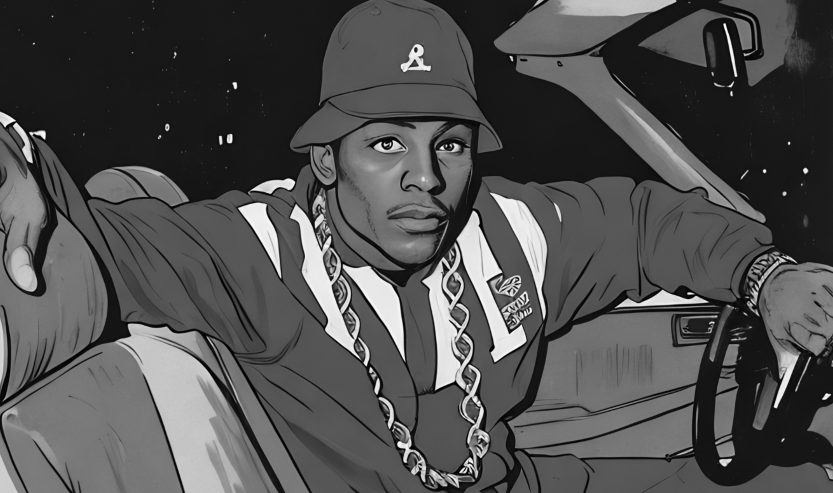


LL Cool J strode into Hip Hop as a trailblazer who blended bravado with charm, carving out a unique space in the era’s evolving landscape. Born James Todd Smith in Queens, New York, in 1968, he exploded onto the scene with his 1985 debut, Radio, released as one of Def Jam’s first stars. At just 17, he brought a fresh energy with tracks like “I Can’t Live Without My Radio,” merging booming beats with a cocksure flow that defined the Golden Age’s youthful swagger.
His influence grew from his ability to fuse street credibility with pop appeal. On Radio, produced by Rick Rubin, LL’s minimalist sound—think hard kicks and sparse scratches—laid an early Golden Age foundation. By 1987’s Bigger and Deffer, he’d broadened his palette, dropping “I Need Love,” Hip Hop’s first major ballad, which proved rap could croon as well as conquer. The Golden Age peaked for LL with Mama Said Knock You Out in 1990, where the title track—a gritty, Marley Marl-produced banger—reasserted his dominance after doubters questioned his edge. “Around the Way Girl” from the same album added a smooth, relatable vibe, cementing his versatility.
LL Cool J’s staying power set him apart. While many Golden Age acts faded, he thrived into the ’90s with 14 Shots to the Dome (1993) and Mr. Smith (1995), balancing hardcore rhymes with radio-ready hooks like “Hey Lover.” His chiseled image and ladies’ man persona made him Hip Hop’s first heartthrob, influencing the genre’s visual and commercial evolution. He paved the way for crossover stars like Will Smith, proving rap could shine on MTV and beyond the block.
In the Golden Age tapestry, LL Cool J wove a thread of resilience and reinvention. Where others leaned on rebellion or poetry, he blended toughness with charisma, shaping Hip Hop’s mainstream ascent. His journey from Queens teenager to global icon mirrors the era’s growth, leaving a legacy that ripples through rap’s DNA. LL didn’t just ride the Golden Age wave—he helped steer it, proving one mic and a bold attitude could take Hip Hop anywhere.
Also read: Ranking LL Cool J’s Albums & Top 15 LL Cool J Songs
10. De La Soul
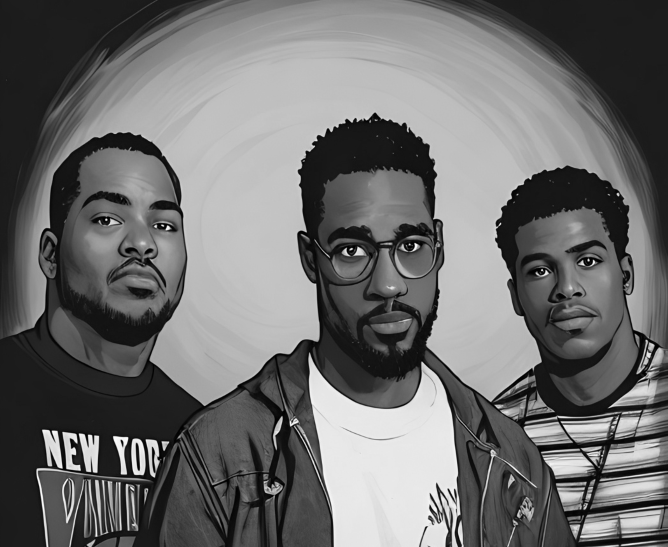


De La Soul burst on the scene with a sound that was as playful as it was profound, offering a vibrant counterpoint to the era’s harder edges. Formed in Long Island, New York, in 1987 by Posdnuos, Trugoy the Dove, and Maseo, this trio debuted with 3 Feet High and Rising in 1989, a kaleidoscope of quirky samples, witty rhymes, and hippie-inspired vibes. Produced by Prince Paul, tracks like “Me Myself and I” and “The Magic Number” painted them as the Golden Age’s free spirits, redefining what rap could sound like.
Their influence flowed from their bold creativity and eclectic approach. De La Soul leaned on funk, jazz, and psychedelic loops—think “Eye Know” sampling Otis Redding—while weaving clever, offbeat lyrics into every bar. As part of the Native Tongues collective with A Tribe Called Quest and Jungle Brothers, they championed a positive, alternative Hip Hop ethos that stood out amid gangsta rap’s rise. Their 1991 follow-up, De La Soul Is Dead, flipped the script with darker tones on “Millie Pulled a Pistol on Santa,” proving they could evolve without losing their soul. By 1996’s Stakes Is High, they’d sharpened their edge, with the title track critiquing Hip Hop’s commercialization—a Golden Age swan song.
The trio’s impact lies in their refusal to conform. They dodged the tough-guy clichés of the time, embracing humor and introspection instead, which opened doors for artists like OutKast and Mos Def. Their legal battles over sample clearances—sparked by 3 Feet High’s dense collage—also forced the industry to rethink production norms, a ripple felt long after the Golden Age faded. De La Soul didn’t chase trends; they built a lane that others followed, blending whimsy with wisdom in a way that still feels fresh.
De La Soul colored the Golden Age with a palette all their own, proving Hip Hop could laugh, think, and groove in equal measure. While others on this list wielded intensity or swagger, they thrived on originality, leaving an imprint that echoes in the genre’s most inventive corners. Their journey from daisy-age dreamers to seasoned commentators mirrors the Golden Age’s diversity, a legacy as enduring as their beats.
Also read: Ranking De La Soul’s Albums
9. Eric B & Rakim
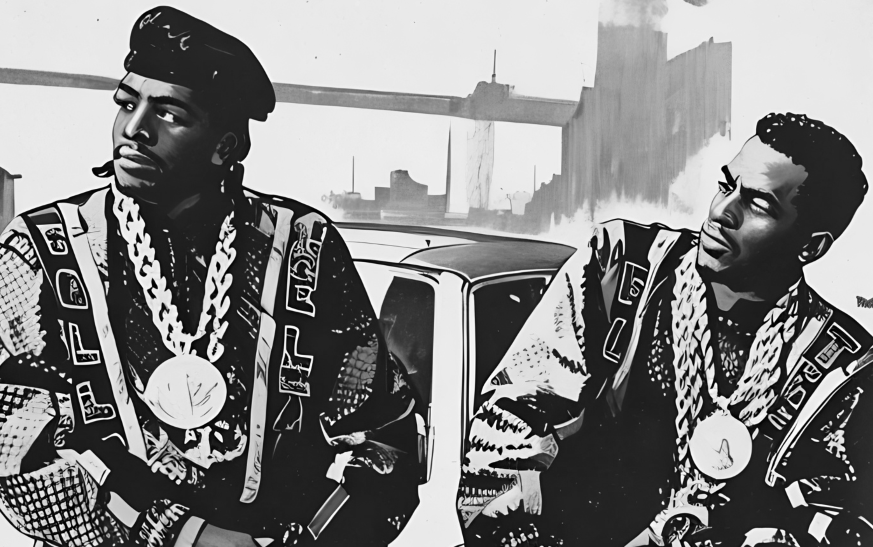


Eric B. & Rakim arrived on the cusp of Hip Hop’s Golden Age, transforming the genre with a quiet intensity that rewrote the rules of rap. Hailing from Long Island, New York, this duo—DJ Eric Barrier and MC William “Rakim” Griffin—dropped their debut, Paid in Full, in 1987, a record that shifted Hip Hop’s lyrical and sonic landscape. With Rakim’s smooth, intricate rhymes and Eric B.’s soulful, minimalist beats, they introduced a sophistication that marked the Golden Age’s evolution from party anthems to poetic mastery.
Rakim’s influence as an MC is seismic. On tracks like “Paid in Full” and “I Ain’t No Joke,” he traded simple chants for complex, multisyllabic flows, delivering verses with a calm authority that felt revolutionary. His internal rhymes and metaphors elevated rap to a literary craft, earning him the nickname “The God MC.” Eric B.’s production (with some ‘assistance’ from the likes of Marley Marl, Paul C, and Large Professor here and there…), rooted in James Brown samples and sparse drum breaks, gave Rakim’s words room to breathe, setting a template for the Golden Age’s boom-bap sound. Their follow-up, Follow the Leader (1988), doubled down with “Microphone Fiend,” showcasing Rakim’s lyrical dominance and Eric B.’s turntable finesse.
The duo’s peak continued with Let the Rhythm Hit ’Em (1990) and Don’t Sweat the Technique (1992), each album refining their formula. “In the Ghetto” and the title track “Don’t Sweat the Technique” blended street wisdom with jazz-infused beats, proving their versatility as the Golden Age matured. Though they split in 1993, their innovations rippled through the era, inspiring MCs like Nas and Biggie to push lyrical boundaries. Rakim’s cerebral style and Eric B.’s understated grooves became a cornerstone of East Coast Hip Hop, bridging old-school roots with the genre’s future.
Eric B. & Rakim redefined what it meant to be an MC and DJ in the Golden Age, turning rap into an art of precision and depth. Where others on this list thrived on volume or rebellion, they excelled through subtlety and skill, leaving a legacy that resonates in every bar spit since. Their work remains a touchstone for Hip Hop purists, a testament to the era’s boundless creativity.
8. A Tribe Called Quest
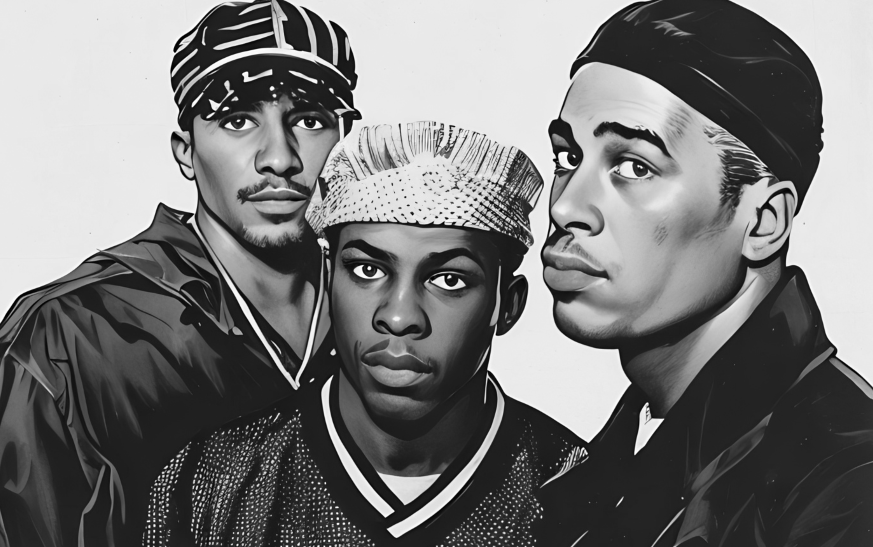


A Tribe Called Quest emerged from Queens, New York, in the late 1980s, bringing a fresh breeze to Hip Hop’s Golden Age with their jazzy, laid-back sound. Formed by Q-Tip, Phife Dawg, Ali Shaheed Muhammad, and Jarobi White, this crew debuted with People’s Instinctive Travels and the Paths of Rhythm in 1990, but it was The Low End Theory (1991) that solidified their place among the era’s elite. Tracks like “Can I Kick It?” and “Check the Rhime” offered a soulful alternative to the growing gangsta rap wave, proving Hip Hop could groove as much as it could grit.
Their influence flowed from their innovative fusion of jazz samples and clever rhymes. Q-Tip’s smooth, abstract delivery paired with Phife Dawg’s punchy, everyman style created a chemistry that felt like a conversation between friends. On The Low End Theory, Ron Carter’s upright bass grounded “Verses from the Abstract,” blending Hip Hop with live instrumentation in a way that felt revolutionary. Midnight Marauders (1993) took it further, with “Award Tour” and “Electric Relaxation” showing their knack for catchy hooks and introspective lyrics. Tribe’s music was a vibe—chill yet profound, a Golden Age counterpoint to the era’s harder edges.
The group’s impact lay in their ability to broaden Hip Hop’s palette. They championed positivity and creativity, tackling everyday life—love, identity, and community—with a light touch that still hit deep. Their Native Tongues affiliation, alongside De La Soul and Jungle Brothers, birthed an alternative Hip Hop scene that thrived in the Golden Age, influencing artists like Common and The Roots. By 1996’s Beats, Rhymes and Life, their evolution kept them relevant, even as the era faded, with darker tones hinting at their versatility.
A Tribe Called Quest carved a unique lane in the Golden Age, proving Hip Hop could be as mellow as it was militant. Their jazzy beats and thoughtful rhymes left a lasting echo, shaping the genre’s artistic side. While others on this list roared with rebellion or swagger, Tribe invited listeners to kick back and reflect, crafting a legacy that remains a cornerstone of Hip Hop’s diverse Golden Age tapestry.
7. N.W.A
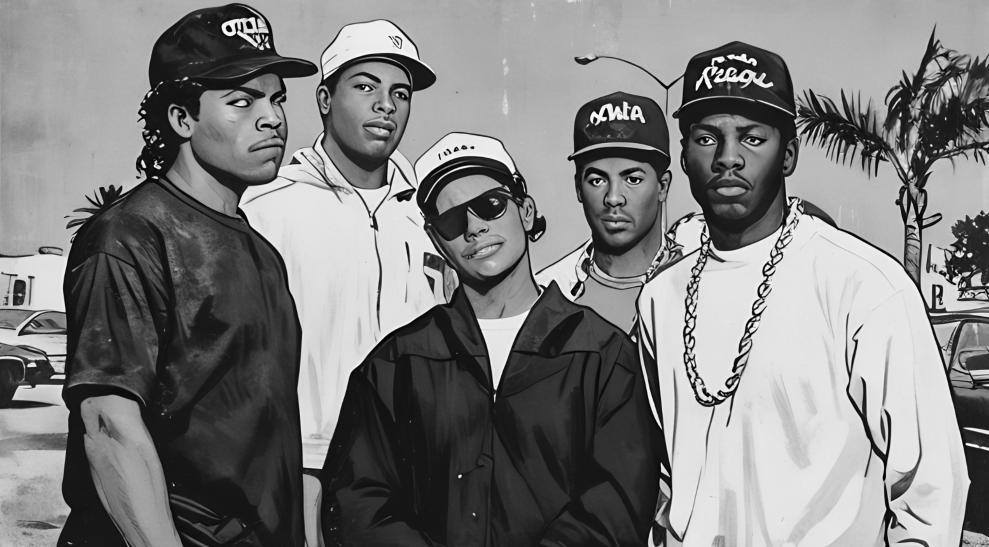


N.W.A roared out of Compton in the late 1980s, igniting Hip Hop’s Golden Age with a sound that was as explosive as it was provocative. Formed in 1986 by Eazy-E, Dr. Dre, Ice Cube, MC Ren, and DJ Yella, this West Coast crew unleashed Straight Outta Compton in 1988, a raw manifesto that birthed gangsta rap. With tracks like “F*** tha Police,” they confronted systemic brutality head-on, delivering a middle finger to authority that resonated far beyond Los Angeles. Their unfiltered tales of street life and rebellion made them a defining voice of the era.
The group’s power stemmed from their fearless authenticity and sonic innovation. Dr. Dre’s production—gritty, funk-laced beats—gave their rhymes a menacing pulse, while Ice Cube’s razor-sharp lyrics on tracks like “Straight Outta Compton” painted vivid, unapologetic pictures of Compton’s reality. Eazy-E’s raspy delivery added a wild edge, making their debut a cultural Molotov cocktail. By 1991’s Efil4ziggan, they’d refined their chaos, topping charts while sparking controversy, a testament to their Golden Age dominance. Though the group disbanded by 1991, their influence lingered, reshaping Hip Hop’s tone and reach.
N.W.A’s legacy splintered into solo triumphs that amplified their impact. Dr. Dre left to craft The Chronic (1992), a Golden Age swan song that perfected G-funk and launched Snoop Dogg, cementing his status as a production titan. His beats became the West Coast’s heartbeat, influencing rap’s sound for decades. Ice Cube, departing after Straight Outta Compton, dropped AmeriKKKa’s Most Wanted (1990), blending gangsta grit with social critique. His solo hit “It Was a Good Day” (1992) showcased a reflective side, proving his versatility. Both carried N.W.A’s DNA into their solo careers, extending the group’s shadow over the Golden Age and beyond.
N.W.A redefined Hip Hop by giving voice to the unheard, turning Compton into a global symbol of resistance. Their provocative edge and sonic blueprint inspired a generation of artists, from Tupac to Kendrick Lamar. While others on this list shaped the culture with poetry or swagger, N.W.A brought the streets to the forefront, leaving an indelible mark on the Golden Age’s rebellious spirit.
6. Run DMC
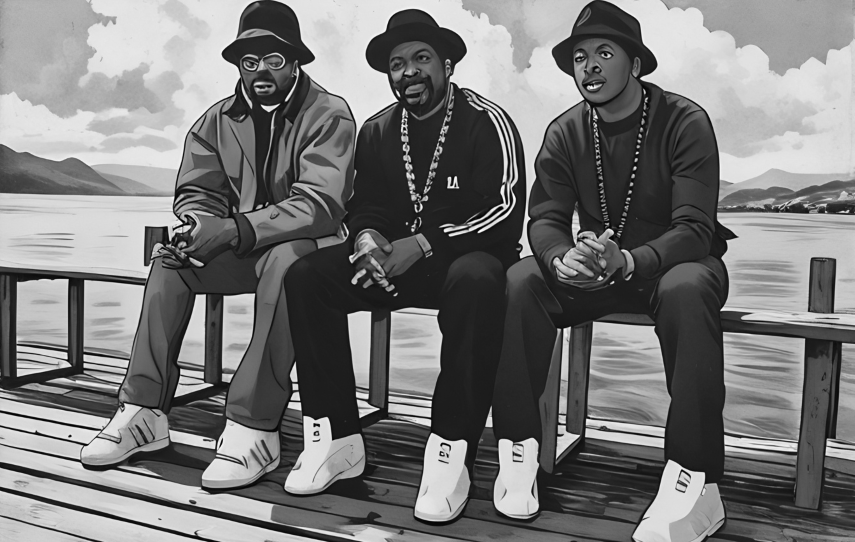


Run-DMC charged into Hip Hop’s Golden Age with a force that reshaped the genre’s trajectory. Hailing from Queens, New York, the trio—Joseph “Run” Simmons, Darryl “DMC” McDaniels, and Jason “Jam Master Jay” Mizell—formed in 1983 and hit their stride with Raising Hell in 1986. This album turned rap into a global phenomenon, blending street credibility with crossover appeal. Their collaboration with Aerosmith on “Walk This Way” became a landmark moment, merging rock and rap to blast Hip Hop onto mainstream airwaves, a feat that marked the Golden Age’s expansive reach.
Their brilliance lay in their straightforward approach and bold identity. Run-DMC relied on crisp beats, traded verses, and Jam Master Jay’s masterful cuts to deliver a sound that was both primal and polished. Early tracks like “It’s Like That” (1983) addressed social issues with sharp rhymes, setting a tone of purpose. Then came Raising Hell, where “My Adidas” transformed a sneaker into a cultural symbol, earning them a groundbreaking endorsement and showcasing rap’s market power. “Peter Piper” added a playful edge, highlighting their lyrical dexterity and cementing their role as innovators among Golden Age peers.
As the era progressed, albums like Tougher Than Leather (1988) and Down with the King (1993) kept their legacy alive, adapting their classic style to new vibes while staying true to their roots. Run-DMC’s influence rippled through Hip Hop, shaping its fashion with tracksuits and fedoras, its attitude with unapologetic confidence, and its business savvy with trailblazing deals. They paved the way for acts like LL Cool J and Beastie Boys, proving rap could thrive beyond underground circles. Their 2009 induction into the Rock and Roll Hall of Fame as the first rap act affirmed their monumental status.
Run-DMC stands tall in the Golden Age for bridging rap’s raw origins with its commercial future. They embodied the era’s fearless energy, turning Queens rhymes into a worldwide echo. While others on this list dazzled with complexity or rebellion, Run-DMC thrived on clarity and impact, crafting a legacy as enduring as their shell-toe Adidas. Their sound still reverberates, a testament to their foundational role in Hip Hop’s evolution.
5. Public Enemy
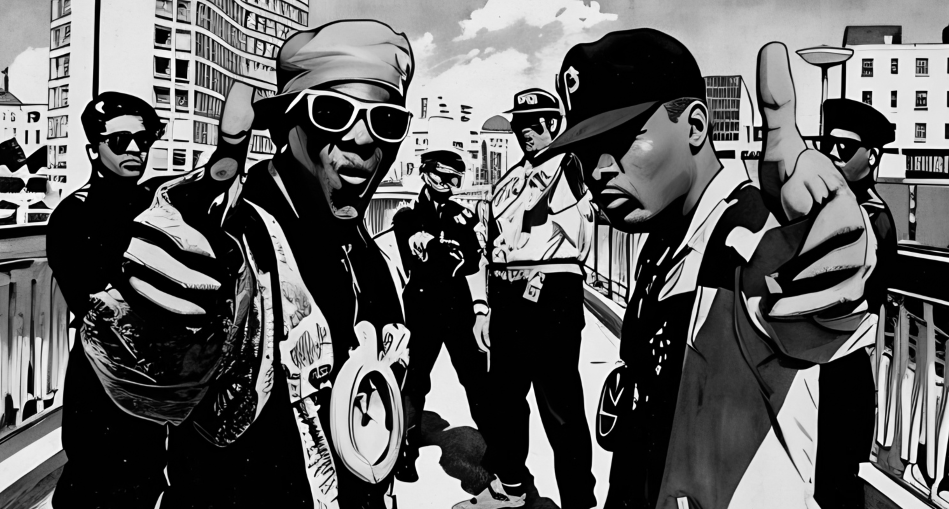


Public Enemy stormed into Hip Hop’s Golden Age with a sound and message that hit like a sonic revolution. Formed in Long Island, New York, in 1985, this groundbreaking group—led by Chuck D’s booming baritone and Flavor Flav’s wild charisma—transformed rap into a platform for social critique. Their 1987 debut, Yo! Bum Rush the Show, laid the groundwork, but it was It Takes a Nation of Millions to Hold Us Back (1988) that cemented their Golden Age legacy. With tracks like “Bring the Noise” and “Don’t Believe the Hype,” they fused aggressive beats with unapologetic commentary, making Hip Hop a megaphone for the marginalized.
The group’s influence is rooted in their fearless innovation. Chuck D tackled systemic racism, media bias, and urban struggle with razor-sharp lyrics, while the Bomb Squad’s production—layered with sirens, funk samples, and chaotic energy—created a sound as urgent as their message. “Fight the Power” (1989), from the Do the Right Thing soundtrack, became an anthem of resistance, its call to action reverberating far beyond Hip Hop. Public Enemy educated and agitated, shaping the Golden Age’s politically charged undercurrent.
Their third album, Fear of a Black Planet (1990), doubled down with hits like “911 Is a Joke” and “Welcome to the Terrordome,” blending satire and fury to dissect America’s racial tensions. Flavor Flav’s hypeman antics—wild clocks and all—added a counterpoint to Chuck’s gravitas, making them a dynamic duo that balanced heavy themes with accessibility. By 1994’s Muse Sick-n-Hour Mess Age, their Golden Age peak had set a standard for conscious rap that influenced everyone from KRS-One to modern activists.
For Hip Hop Golden Age, Public Enemy earns their place here for their revolutionary fusion of music and message. They proved Hip Hop could be both a party and a protest, inspiring artists to speak truth to power. Chuck D once said, “We’re the CNN of the streets,” and in the Golden Age, Public Enemy broadcast a revolution that still echoes today.
Also read: Top 15 Public Enemy Songs
4. Wu-Tang Clan
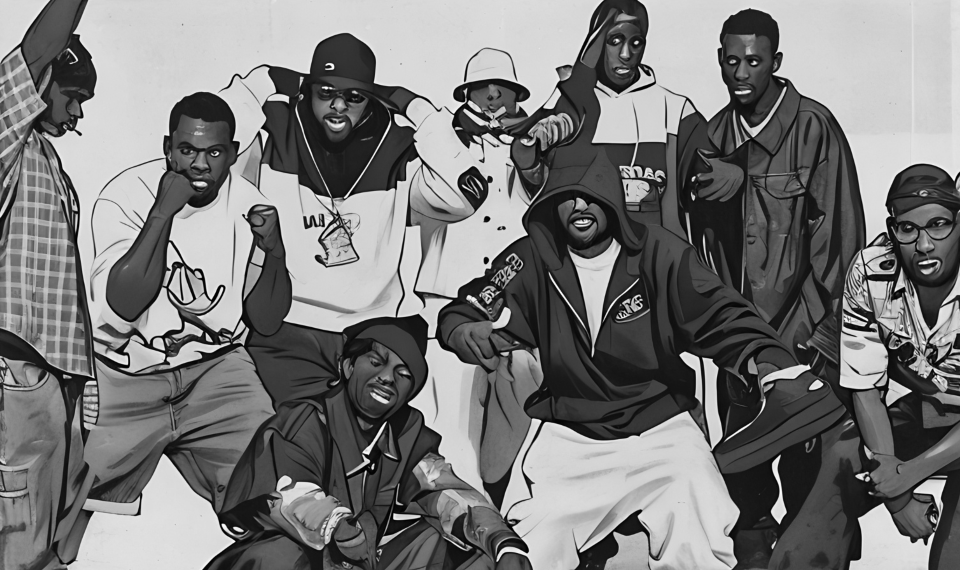


In the pantheon of Hip Hop’s Golden Age, Wu-Tang Clan stands as a towering collective that redefined the genre’s possibilities. Formed in Staten Island, New York, in the early 1990s, this nine-member crew—led by the visionary RZA—burst onto the scene with their 1993 debut, Enter the Wu-Tang (36 Chambers). Blending martial arts mystique, gritty street narratives, and innovative production, they brought a raw, chaotic energy that captured the essence of the Golden Age’s experimental spirit. With tracks like “C.R.E.A.M.” and “Protect Ya Neck,” Wu-Tang built a movement.
The Clan’s influence lies in their unique approach. RZA’s lo-fi beats, drenched in kung-fu samples and soul chops, created a soundscape unlike anything before, while members like Method Man, GZA, Raekwon, and Ghostface Killah each brought distinct styles—gruff, cerebral, cinematic, and wild. “C.R.E.A.M.” (1993) became an anthem, its hook (“Cash rules everything around me”) echoing the era’s hustle mentality, while “Bring da Ruckus” showcased their lyrical ferocity. This wasn’t a solo act but a brotherhood, proving Hip Hop could thrive as a collective force. Their DIY ethos and raw authenticity resonated with fans, making 36 Chambers a Golden Age cornerstone.
Wu-Tang’s impact extended beyond their debut. By 1996, solo projects like Method Man’s Tical (1994), Raekwon’s Only Built 4 Cuban Linx… (1995), GZA’s Liquid Swords (1995), Ol’ Dirty Bastard’s Return To The 36 Chambers (1995), and Ghostface Killah’s Ironman (1996) expanded their universe, each album a Golden Age gem that showcased their individual talents while reinforcing the group’s brand. Their slang, logo, and mythology turned them into a cultural phenomenon, influencing fashion, film, and future rap crews.
Wu-Tang Clan will forever be remembered for their revolutionary sound and collective genius. They reshaped Hip Hop, proving that unity and creativity could dominate a solo-driven genre. From Staten Island to the world, their influence persists, inspiring artists to think big and build legacies. Wu-Tang Clan ain’t nothin’ to f with, and their Golden Age reign remains untouchable.
3. Nas
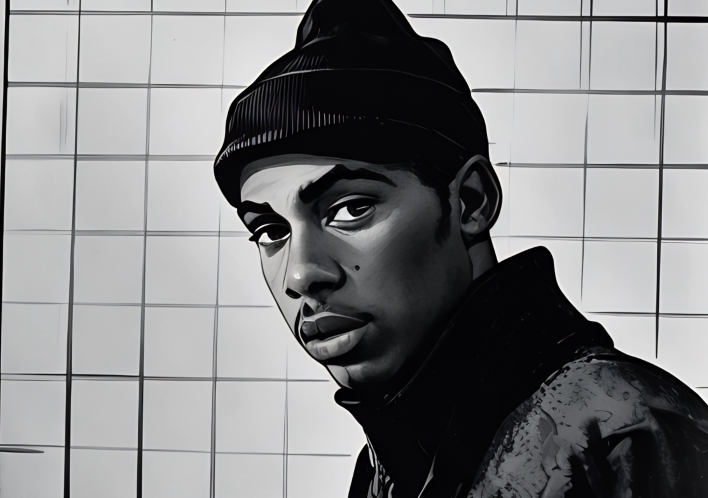


When it comes to lyrical brilliance in Hip Hop’s Golden Age, few names shine as brightly as Nas. Born Nasir Jones in Queens, New York, in 1973, he stormed onto the scene with his 1994 debut, Illmatic, a masterpiece widely regarded as one of the greatest albums in Hip Hop history. At just 20 years old, Nas captured the essence of the Golden Age with a poetic pen, vivid storytelling, and a streetwise intellect that set him apart. Tracks like “N.Y. State of Mind” painted a cinematic portrait of Queensbridge life, blending gritty realism with a flow so precise it redefined emceeing.
Nas’ influence during the Golden Age stems from his ability to elevate rap into an art form. Illmatic, released at the tail end of the era, was a love letter to East Coast Hip Hop, produced by legends like DJ Premier, Pete Rock, and Large Professor. Songs like “The World Is Yours” (1994) offered hope amid despair, while “It Ain’t Hard to Tell” showcased his dense, multisyllabic rhymes over a Michael Jackson sample. This wasn’t just music—it was literature, earning Nas comparisons to poets and prophets. His debut didn’t chase commercial trends but instead solidified the Golden Age’s focus on substance over flash, influencing countless rappers who followed.
Beyond Illmatic, Nas’ early career laid the groundwork for his lasting legacy. His 1996 follow-up, It Was Written, though just past the Golden Age cutoff, built on his ’94 foundation with hits like “If I Ruled the World,” proving his versatility. During the era, he was the voice of the streets—introspective yet unapologetic—bridging the gap between underground purists and mainstream listeners. His rivalry with Jay-Z later amplified his stature, but it’s his Golden Age work that cements his influence. Search terms like “best Nas songs” or “Illmatic tracks” still dominate, reflecting his timeless appeal.
Nas earns the #3 spot for his unparalleled lyricism and the seismic impact of Illmatic. Nas proved that words could hit as hard as beats, securing his place among the era’s immortals.
Also read: Ranking Nas’ Albums
2. The Notorious B.I.G. (Biggie Smalls)
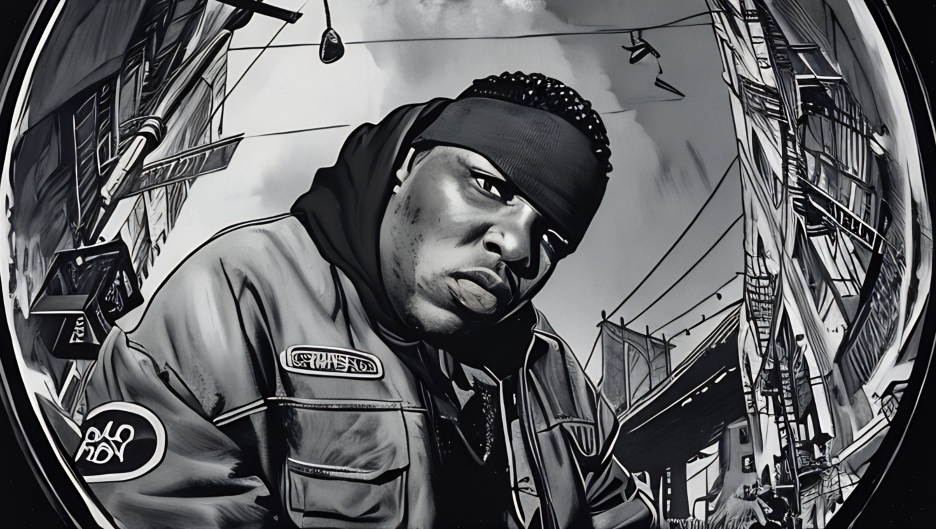


If Hip Hop’s Golden Age has a king of the East Coast, it’s The Notorious B.I.G., aka Biggie Smalls. Born Christopher Wallace in Brooklyn in 1972, Biggie emerged in the early 1990s as a lyrical juggernaut whose debut album, Ready to Die (1994), redefined rap storytelling. With a voice as smooth as it was commanding, he painted vivid portraits of street life, ambition, and vulnerability, earning him a spot among the era’s elite. Tracks like “Juicy,” a 1994 anthem of rags-to-riches triumph, showcased his ability to turn personal struggle into universal appeal, making it a Golden Age classic that still resonates today.
Biggie’s influence lies in his unmatched flow and larger-than-life persona. He blended hardcore rhymes with radio-ready hooks, a formula that elevated East Coast Hip Hop during the Golden Age’s peak. Songs like “Big Poppa” (1994) brought a suave charisma to the genre, while “Everyday Struggle” revealed a raw, introspective side that connected with fans on a visceral level. His technical skill—multisyllabic rhymes delivered with effortless cadence—set a new standard for MCs, influencing everyone from Jay-Z to modern rappers. By 1996, as the Golden Age waned, Biggie was poised to dominate with his sophomore album, Life After Death (released posthumously in 1997), but his murder in March 1997 cut his reign short.
Beyond the mic, Biggie’s rivalry with Tupac and the East Coast-West Coast feud amplified his legend, turning him into a symbol of the era’s intensity. His larger frame, sharp wit, and tales of Brooklyn hustle made him a cultural icon whose influence transcends Hip Hop. Biggie earns the #2 spot here for his lyrical genius and pivotal role in shaping the sound of the 1990s. He crafted a legacy that keeps the Golden Age’s spirit alive, proving that even in a short career, true greatness leaves an indelible mark.
1. Tupac Shakur (2Pac)



Few artists embody the spirit and complexity of Hip Hop’s Golden Age like Tupac Shakur, better known as 2Pac. Born in 1971, he burst onto the scene in the early 1990s, quickly becoming one of the most influential voices of his generation. His debut album, 2Pacalypse Now (1991), introduced a raw, socially conscious MC who tackled issues like police brutality, poverty, and systemic inequality with unapologetic fervor. Tracks like “Brenda’s Got a Baby” showcased his storytelling prowess, blending gritty realism with a compassion that resonated deeply with listeners. By the time his third album Me Against the World dropped in 1995, 2Pac had cemented his status as a Golden Age titan, merging introspective lyrics with West Coast flair.
What sets 2Pac apart is his versatility. He could deliver anthems like “I Get Around” (1993) with a playful swagger, then pivot to the haunting vulnerability of “Dear Mama,” a 1995 ode to his mother that remains one of Hip Hop’s most cherished tracks. All Eyez on Me (1996) was a double-disc masterpiece that fused G-funk beats—courtesy of Dr. Dre—with 2Pac’s magnetic charisma. Hits like “California Love” and “How Do U Want It” dominated airwaves, proving he could balance commercial success with artistic depth. This album, released just before his tragic death in September 1996, together with The Don Killuminati – The 7 Day Theory (released as Makaveli) that dropped posthumously in November of the same year, marked the end of an era, making 2Pac a symbolic bookend to the Golden Age.
Beyond music, 2Pac’s influence lies in his larger-than-life persona. He was a poet, actor, and activist whose contradictions—thug life bravado mixed with intellectual sensitivity—mirrored the complexity of Hip Hop itself. His feuds, notably with The Notorious B.I.G., fueled the East Coast-West Coast rivalry, amplifying his legend. Even today, his name generates massive interest, with fans dissecting his lyrics and legacy in documentaries and forums. For Hip Hop Golden Age, 2Pac stands at #1 on this particular list, not just for his chart-topping hits, but for embodying the era’s soul: rebellious, reflective, and revolutionary. His voice still echoes, inspiring artists and fans to keep the Golden Age spirit alive.
This post was originally published on this site be sure to check out more of their content.


